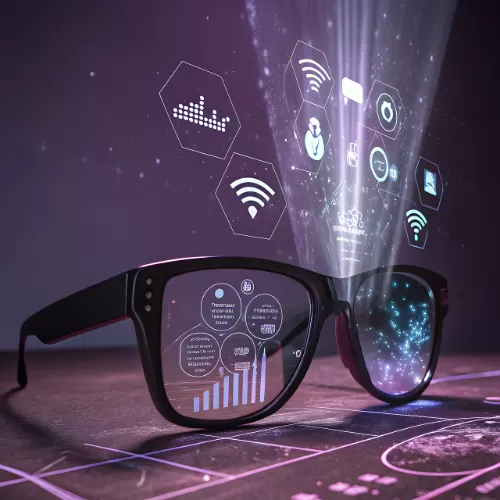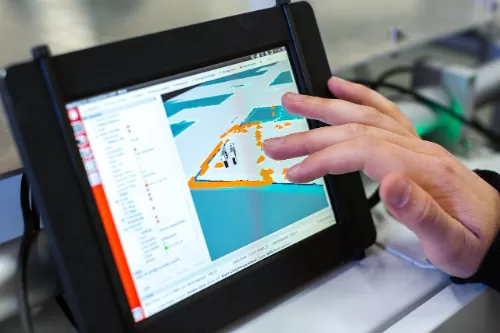AI-Driven Robotics: Revolutionizing Deep-Space Exploration Missions
In the vast expanse of space, where human intuition falters and communication delays stretch to hours, artificial intelligence (AI) is emerging as the unsung hero of modern exploration. From autonomous rovers navigating Martian craters to robotic arms assembling lunar bases, AI-driven robotics are reshaping how we venture beyond Earth’s orbit. This technological leap not only accelerates scientific discovery but also paves the way for sustainable space exploration in an era where missions to the Moon, Mars, and beyond are becoming increasingly ambitious.
Related searches

The Autonomous Edge: AI’s Role in Unmanned Missions
Deep-space missions face unique challenges: radiation, extreme temperatures, and the inability to rely on real-time human guidance. AI-powered systems address these hurdles by enabling robots to make split-second decisions. For example, NASA’s Perseverance rover on Mars uses AI to analyze rock formations in real time, identifying targets for sampling without waiting for instructions from Earth . This "adaptive sampling" technology, which autonomously selects geological specimens, has cut mission timelines by weeks and unlocked insights into Mars’ ancient environment. Similarly, ESA’s upcoming Rosalind Franklin rover, designed to drill two meters into Martian soil, will rely on AI to navigate hazards and prioritize scientific targets, even as its launch date shifts to 2028 due to technical adjustments .
Efficiency and Cost Reduction: AI’s Economic Impact
Traditional space exploration relies on labor-intensive, Earth-centric operations. AI-driven robotics disrupt this model by streamlining processes and reducing costs. For instance, 3D printing, combined with AI design software, allows engineers to create complex rocket components with fewer parts. NASA’s recent tests of a 3D-printed methane-powered turbine pump, which cut manufacturing time by 45%, exemplify this shift . Such innovations could slash mission costs by 90%, making projects like SpaceX’s Starship—a vehicle intended to carry crews and cargo to Mars—economically viable.
AI also optimizes resource allocation. In 2025, China’s Tianwen-3 mission will deploy AI-equipped robotic arms to collect asteroid samples, mirroring NASA’s OSIRIS-REx mission but with enhanced autonomy . By automating tasks like sample preservation and instrument calibration, these systems minimize human error and maximize scientific output.
Sustaining Long-Term Missions: From Orbit to Colonization
For humanity to establish a lasting presence in space, robots must become self-sufficient. AI is critical here. ESA’s Moonlight Constellation, a network of satellites orbiting the Moon, will use AI to manage real-time data transfers, enabling astronauts and rovers to communicate seamlessly . This infrastructure supports projects like NASA’s Artemis Base Camp, a lunar outpost where AI-powered 3D printers could construct habitats using lunar regolith (rocky soil) .
AI also plays a role in life support systems. NASA’s "Pizza Printer," a prototype 3D food printer, uses AI to create nutritious meals from powdered ingredients, a breakthrough for multi-year missions . Meanwhile, autonomous drones and rovers could mine water ice in lunar craters or extract oxygen from Martian soil, reducing reliance on Earth for supplies.
Global Collaboration: AI as a Unifying Force
Space exploration is no longer a solo endeavor. AI fosters international cooperation by standardizing data analysis and mission protocols. For example, China’s 2025 cloud-based meteorological satellite constellation, YunYao-1, uses AI to process atmospheric data, sharing insights with global weather agencies . Similarly, the European Union’s Galileo satellite navigation system integrates AI to enhance accuracy, supporting both civilian and scientific applications.
Private companies are also leveraging AI to democratize access to space. Companies like Neura Robotics, which developed "cognitive" humanoid robots for industrial use, are adapting their technology for space applications, such as repairing satellites or assisting astronauts in zero gravity . These advancements highlight how AI bridges the gap between terrestrial innovation and cosmic ambition.
The Future: AI-Driven Frontiers
As AI and robotics evolve, the possibilities for space exploration expand. Next-gen systems may include swarm robotics—thousands of tiny, AI-connected drones exploring distant planets—or quantum-computing hybrids that solve complex problems in real time. Projects like NASA’s SPHEREx mission, launching in 2025, will use AI to map the universe’s infrared light, unraveling mysteries of galaxy formation .
However, challenges remain. Ensuring AI systems operate reliably in radiation-heavy environments, protecting data from cyber threats, and addressing ethical concerns about autonomous decision-making are ongoing priorities. Yet, with global investment in AI research surpassing $80 billion annually , the trajectory is clear: AI-driven robotics are not just tools but partners in humanity’s quest to explore the cosmos.
Conclusion
AI is transforming space exploration from a laborious, Earth-dependent enterprise into a dynamic, self-sustaining endeavor. By enabling autonomy, efficiency, and collaboration, these technologies are unlocking new frontiers—from Mars’ ancient riverbeds to the icy moons of Jupiter. As we stand on the cusp of a new era, AI-driven robotics remind us that the stars are no longer out of reach, but within the grasp of innovation.

How Cloud Gaming Lets You Play AAA Games on Any Device

From Hurricane Hunters to AI: The Future of Extreme Weather Prediction

Smart Home Security: How to Protect Your House with AI

The Aging Switch: Could Rewriting Our DNA Add 20 Years to Human Life

The Invisible Doctor: How Wearables Are Making Healthcare Proactive

AI-Driven Robotics: Revolutionizing Deep-Space Exploration Missions








